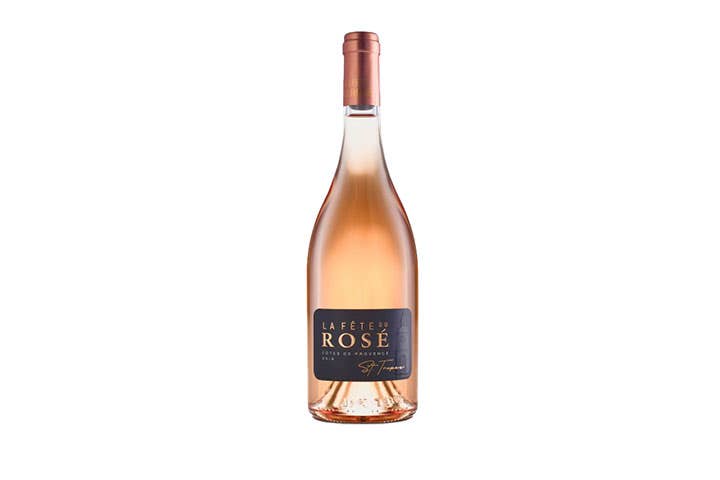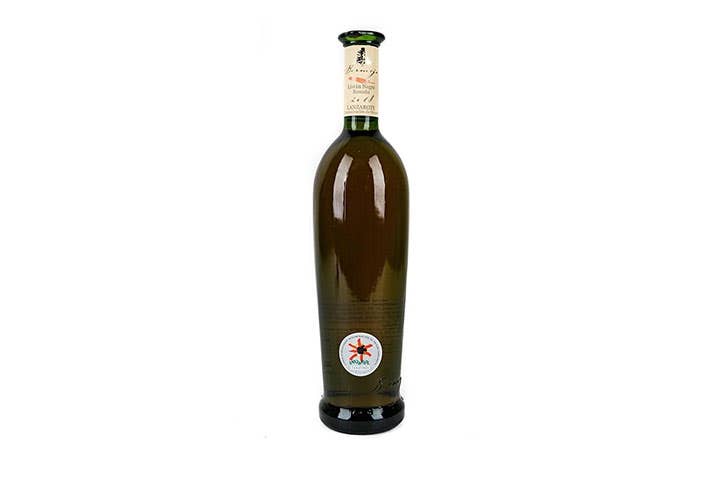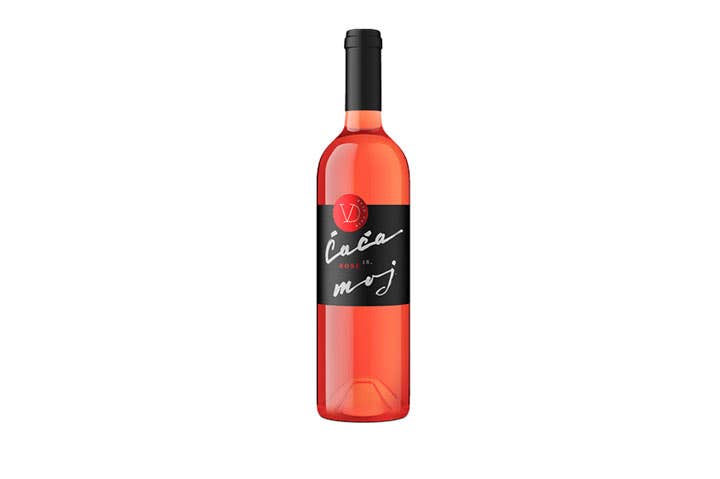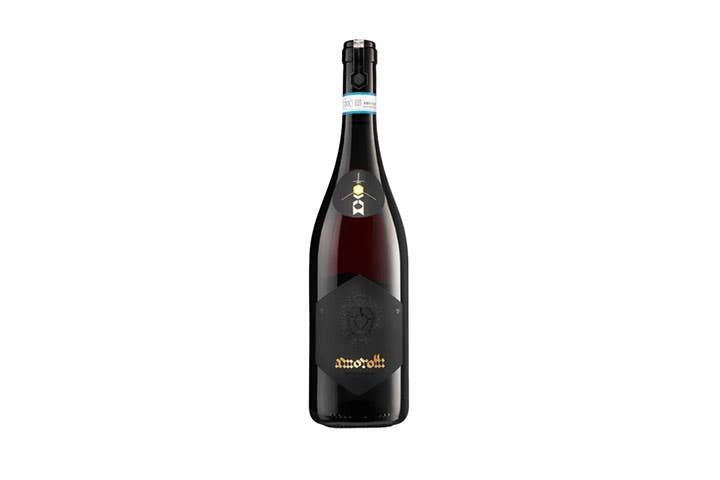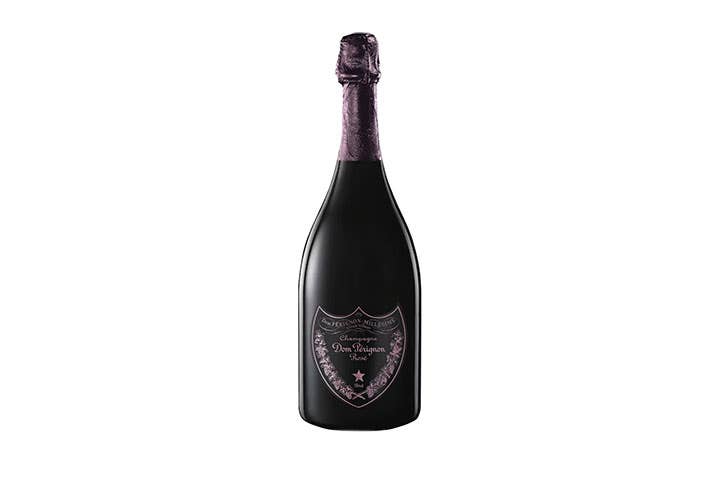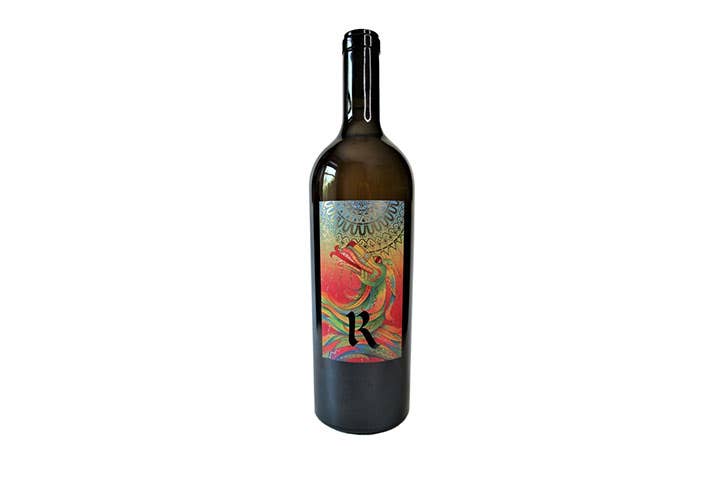The Best Rosés to Drink Throughout 2022 and Beyond
From new-wave Provençal to classic Californian (and everything in between), these are the most epic rosés of the year.
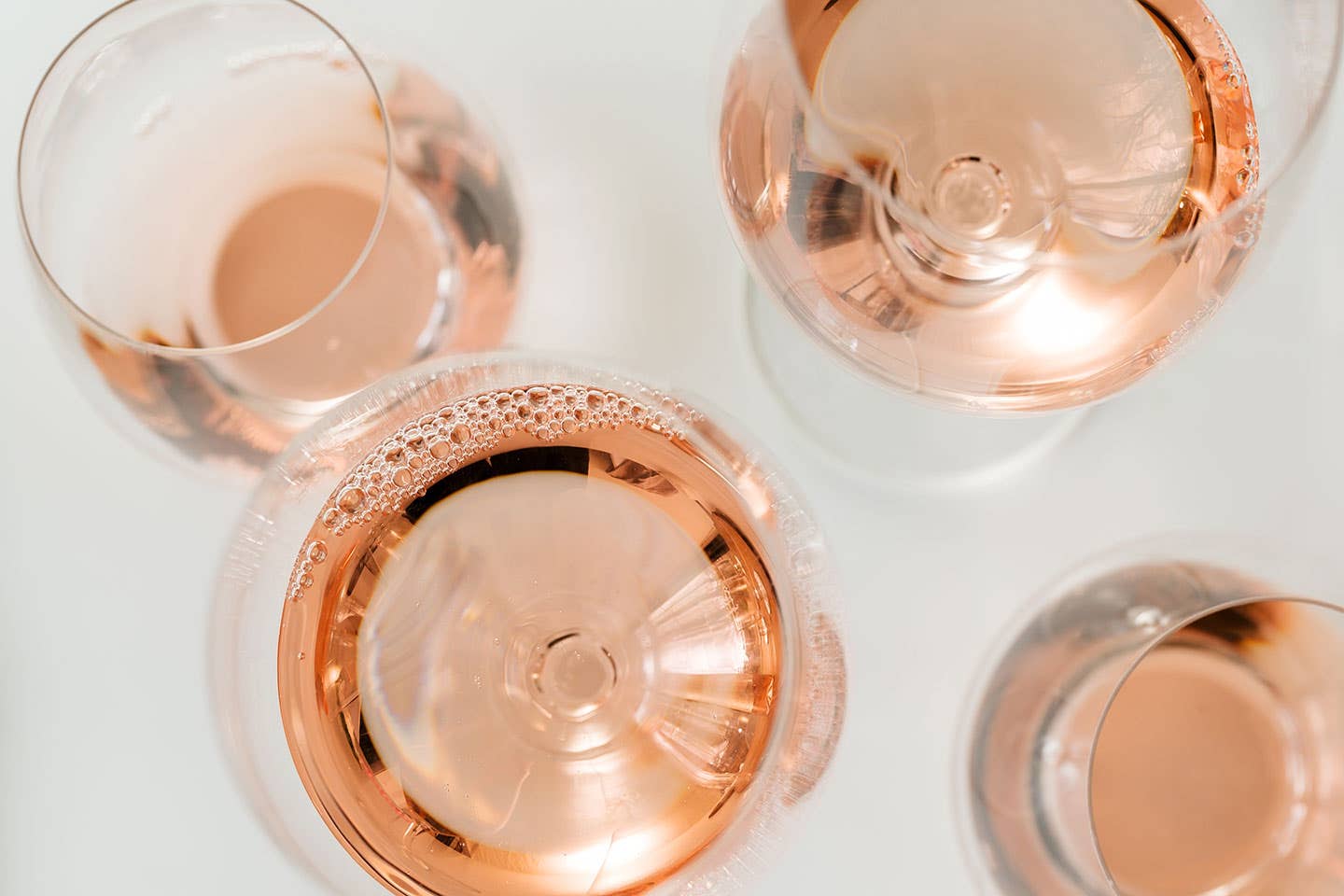
In the Old World, the best rosés have been popular for centuries, but for American drinkers, the category is still taking shape after the infamous, sickly sweet wave of White Zinfandel first crashed into the pink wine scene in the late 1970s (and well into the ‘80s). Since then, rosé fell into obscurity and has only recently risen again in popularity across the United States, this time in a much fresher, drier form—call it a nod to the winemakers and drinkers of France’s southern coast, where they seem to have had it right all along.
“In the long run, I envision the rosé category—specifically Côtes de Provence rosé—gaining the admiration and respect of wine drinkers, with notoriety becoming on par with white Burgundy or Chablis,” says Donae Burston, founder of La Fête Wine Company, a wine brand produced in collaboration with legendary Saint-Tropez winery Château Saint-Maur. According to Burston, who has built his company around making great wine accessible and inclusive for all, the momentum we’ve seen over the past decade or so continues to build “within the young guard of sommeliers, wine buyers, and wine writers,” he shares. “And [now], we see winemakers really focused on crafting high-quality rosé wine.”
Whether you plan to sip Provence’s finest on a sunny boat deck or toast with your favorite California rosé at the first barbecue of the summer, it’s high time to stock up on pink wine—here are the best rosés to drink right now.
Our Top Picks
- Best Overall: La Fête du Rosé 2021
- Best Biodynamic: Remy Wines 2021 Three Wives Germaine Gabrielle Rosé
- Most Unique: Los Bermejos Listan Negro Rosado 2020
- Best Under $25: Deak ĆaĆa Moj Plavac Mali Rosé 2018
- Best Under $50: Amorotti Cerasuolo d’Abruzzo 2018
- Best Sparkling: Dom Pérignon Rosé 2008
- Best Californian: Realm Cellars La Fe Napa Valley Rosé 2020
Best Overall: La Fête du Rosé 2021
Best Overall
Origin: France | Alcohol volume: 13% | Tasting notes: Stone fruits, banana, saline | Best for: Anytime
Pros
- Sustainably produced
- Prestigious winemaker
- Minority-owned brand
Cons
- Limited availability
Why we chose it: Wine expert and entrepreneur Donae Burston’s Saint-Tropez wine company is breaking barriers for rosé drinkers across the globe.
As the longtime global epicenter of rosé, Provence’s winemakers produce countless bottles of the region’s iconic style (think bright acid and good minerality with plenty of fruit notes on the nose and palate, and usually some variation of pale, salmon-pink in hue). Burston’s La Fête du Rosé takes things a step further with beautiful balance and structure, and a level of complexity that’s often missing from the easy-drinking “porch pounders” that—while lovable in their own right—tend to make up the majority of the market.
Best Biodynamic: Remy Wines 2021 Three Wives Germaine Gabrielle Rosé
Best Biodynamic
Origin: Oregon, USA | Alcohol volume: 12.7% | Tasting notes: Strawberry, citrus | Best for: Apéritif
Pros
- Award-winning winery
- LGBTQ-owned
- Club member discount
Cons
- Limited availability
Why we chose it: Accomplished winemaker and LGBTQ community leader Remy Drabkin’s fun, adventurous rosé is perfect for casual drinking on a hot summer day.
Oregon winemaker Remy Drabkin, a champion for the LGBTQ community in her hometown of McMinnville and beyond, is behind some of the most exciting wines in all of the Willamette Valley, and this rosé is no exception. Named for Drabkin’s free-spirited grandmother, the 2021 Germaine Gabrielle is a rosé of Pinot Noir that’s seriously gulpable, featuring predominant notes of ripe strawberry and hints of citrus and stone fruits on the palate.
Most Unique: Los Bermejos Listan Negro Rosado 2020
Most Unique
Origin: Canary Islands, Spain | Alcohol volume: 13.5% | Tasting notes: Strawberry, fresh herbs, earth | Best for: Shellfish, mild cheeses
Pros
- Approachable price point
- Unique flavor profile
Cons
- Slightly bitter on the finish
Why we chose it: Brooklyn wine shop owner Kilolo Strobert swears by this rosé from Spain’s Canary Islands.
Kilolo Strobert, wine expert and co-owner of Fermented Grapes in Brooklyn, New York, has has featured Los Bermejos Listan Negro Rosado in her shop consistently over the past four years, and it’s a best-seller for a reason—this fun, fresh Spanish wine is just slightly smoky with a distinct, juicy kick, and every sip demands another. “The grapes are grown from volcanic soil on the Canary Islands,” says Strobert. “The unique taste is something special, and [the wine] is [surprisingly] affordable.”
Best Under $25: Deak ĆaĆa Moj Plavac Mali Rosé 2018
Best Under $25
Origin: Dalmatia, Croatia | Alcohol volume: 12% | Tasting Notes: Dried fruits, vegetal | Best For: Seafood
Pros
- Family-owned winery
- Great food wine
Cons
- Can be difficult to find
Why we chose it: The Deak family’s ĆaĆa Moj rosé of Plavac Mali, an indigenous Croatian grape, is the perfect gateway to Balkan wines.
If you’re not already on board with drinking Croatian rosés in the warmer months (or all year long, for that matter), you’re most certainly missing out. Plavac Mali, one of the country’s primary autochthonous red grapes, serves as the foundation for this deep pink rosé by the Deak family on the Dalmatian coast—it’s bright and refreshing with plenty of fresh and dried fruit notes on the nose and palate, along with a slight savory, vegetal quality that makes this wine a perfect accompaniment to a wide variety of seafood dishes.
Best Under $50: Amorotti Cerasuolo d’Abruzzo 2018
Best Under $50
Origin: Italy | Alcohol volume: 12.5% | Tasting notes: Raspberry, plum, tarragon | Best for: Spicy, smoky tomato-based dishes
Pros
- Excellent for pairing
- Stands up to bold flavors
Cons
- Could overpower milder foods
Why we chose it: When it comes to rosé, Strobert’s Italian pick is quite possibly one of the best food wines we’ve tasted.
For those who like to splurge on great rosés, Strobert recommends Amorotti Cerasuolo d’Abruzzo, an organic and biodynamic Italian rosé that’s big, bold, and unforgettable by all accounts. “At around $40 a bottle, this wine gives all other rosés a run for their money,” she shares. Pair Amorotti Cerasuolo with rich, tomato-forward dishes like pasta or pizza, ideally with a hint of spice and/or smoke.
Best Sparkling: Dom Pérignon Rosé 2008
Best Sparkling
Origin: France | Alcohol volume: 12.5% | Tasting notes: Wild raspberry, violet | Best for: Special occasions
Pros
- Standout vintage
- Iconic house
Cons
- Pricey
- Must love bubbles
Why we chose it: 2008 was quite the year for the Champagne Region, its essence captured perfectly in this stunning rosé.
There’s nothing quite like a nice, cold bottle of rosé Champagne, especially a vintage like 2008, which was a surprising yet incredible year for the region after a chilly, damp growing season suddenly turned into a series of warm, sunny days. Dom Pérignon released its 2008 rosé at the end of 2021, and it’s proven to be one of the most impressive from the house in recent decades. Full of wild raspberry and floral notes (think violet and iris) that lead into a long, wondrous finish, this Champagne is absolutely worth the investment, whether you choose to drink it now or further cellar it for a few years (if you’ve got the willpower).
Best Californian: Realm Cellars La Fe Napa Valley Rosé 2020
Best Californian
Origin: Napa Valley, California | Alcohol volume: 13.9% | Tasting notes: Cherry, red berries, baking spices | Best for: Drinking on its own or with white meats
Pros
- Unique flavor profile
- Cult-favorite producer
Cons
- Premium price point
- Highly allocated
Why we chose it: Realm is one of Napa’s most breathtaking wineries, and their 2020 rosé transports us there with every sip.
While it can be somewhat tough to find, iconic Napa Valley winery Realm Cellars’ La Fe rosé is a striking wine worth the hunt. Made primarily from merlot grapes with a touch of cabernet sauvignon, the 2020 La Fe emerged as Realm’s only release that year due to devastating fires, against which the wine’s light, bright bouquet and flavor profile serve as stark yet welcome contrast. Expect tart cherry, ripe, red berries, subtle herbaceousness, and slight spice from this beautiful medium-bodied rosé.
How We Chose These Products
Based on current market trends, we chose to focus on dry, refreshing rosé wines for this list. Each of our picks has been tasted by the SAVEUR team and/or its respective featured expert—note that we taste countless wines every year, and only the ones that truly stand out ultimately make the cut. Overall, the selection process for our top rosés of 2022 took into account balance, quality, character, pairing potential, and the story behind every individual wine. And, per our broad editorial standards, we aim to be as equitable and as inclusive as possible with each article we publish.
Features to Keep in Mind When Shopping for a rosé wine
Region
Terroir is a major contributor to a wine’s form at any given stage, and then there’s the winemaker’s impact, or the set of stylistic choices made by the vintner during the vinification process. While the latter is also a key variable to consider, the origin of a wine’s grapes can tell us a few things that are helpful in navigating store shelves—for example, the schist in Château Saint-Maur’s vineyard soils yields a distinct minerality in the 2021 vintage of La Fête du Rosé. If you feel out of your depth when shopping for wines by region, you can always ask for help from a store associate, or you can spend some time researching the terroir of key winemaking areas for any wine you’re interested in buying before your next trip to the store. As they say, knowledge is power.
Taste
Bright, refreshing rosés (which, again, is the theme of this list) are usually great for sipping on their own or as an accompaniment to salty, savory snacks and dishes, depending on flavor profile and body. When drinking this style of wine, we’d advise against pairing with desserts or other sweets as sugar content in food will have a drying effect on any wine, rendering an already-dry wine somewhat unpleasant to drink. Instead, try pairing a pink dessert wine with your sweet treats for best results.
Color Variation
While lighter, paler rosés tend to skew dry and their darker counterparts often sweeter, the shade of any given rosé is not always indicative of where the wine falls on the sweetness scale. Be careful not to make snap judgements while shopping as certain bottles might surprise you—always look to the back of the bottle to see if there’s a description, and if not, either ask a staff member for help or consult a user-generated wine data app like Vivino for insight.
Ask the Experts
Q: Is rosé wine sweet?
Rosé can be sweet, but fresh, dry Provençal-style wines are the primary focus in today’s scene. Keep in mind that the color of a rosé does not necessarily indicate how sweet or dry the wine will be—for example, the 2018 ĆaĆa Moj rosé of Plavac Mali (our Croatian pick) is significantly darker than, say, La Fête du Rosé from Saint-Tropez, but both wines are quite dry on the palate (as are the rest of the rosés on this list). If you’re interested in trying something sweeter, look to styles like White zinfandels, pink moscatos, and dessert wines such as pink ports.
Q: What temperature should a rosé wine be served at?
Ideally, a rosé should be served at a temperature between 50 and 60 degrees Fahrenheit. Some like it colder, though, which is totally okay—what’s most important, generally speaking, is that you drink what you want and do so in the way you like it. If the rosé in your glass becomes too warm, there’s nothing wrong with throwing an ice cube or two in it, a practice co-signed by many inhabitants of the South of France.
Q: How long should a rosé wine stay open?
Like most wines, a rosé will begin to display signs of oxidization within a day or two after having been opened. You can either use an airtight stopper or a preservation system (e.g. Coravin) to slow the process, or you could just finish the bottle on the same day it was opened.
Q: What is the average percentage of alcohol in rosé wines?
Most dry rosé wines clock in at about 12 to 14 percent alcohol-by-volume.
Q: What glasses do we use for a rosé wine?
Rosé can be as casual or as fancy as you want it to be. If you’re drinking outside and prefer not to use glass, an insulated tumbler will do the trick, or if you’re serving a lovely rosé at the dinner table, you can certainly use stemmed glassware (most wine pros opt for all-purpose white wine glasses). The latter also works perfectly when drinking sparkling rosés as the chimney of a white wine glass does a much better job of delivering an effervescent wine’s aromas than, say, a flute or coupe glass.
Our Take
While you can certainly enjoy rosé throughout the year, there’s nothing quite like sharing a nice, cold bottle with friends on a hot summer day (preferably on or near the water). With the season upon us, we’re all about dry, crisp, refreshing wines, and these are our hand-selected favorites—if you’re looking for the classic Provençal experience with a fresh, modern twist, try La Fête du Rosé (you’ll quickly see why it made our Best Overall pick).
Keep Reading
Continue to Next Story
